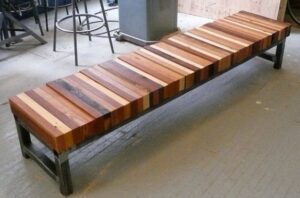Woodworking has been an integral part of human history for thousands of years. From ancient civilizations to modern times, woodworking has played a vital role in building homes, creating furniture, and shaping the world we live in. In this blog post, we’ll take a look back in time and explore the history of woodworking.
Early Woodworking Techniques
Woodworking can be traced back to ancient civilizations such as Egypt, Greece, and Rome. These early civilizations used simple tools like axes, chisels, and saws to create basic furniture, weapons, and tools.
Medieval Woodworking
During the Middle Ages, woodworking techniques advanced significantly, and new tools such as planes and drills were introduced. The invention of the printing press also led to the development of intricate wood carvings and sculptures.
Industrial Revolution
The Industrial Revolution brought about significant changes in woodworking. Machines such as lathes and routers were introduced, making it possible to mass-produce furniture and other wood products. This period also saw the rise of skilled artisans who specialized in creating custom pieces.
Modern Woodworking
Today, woodworking continues to evolve with advances in technology and new materials. CNC machines and computer-aided design (CAD) have revolutionized woodworking, making it possible to create intricate and precise designs quickly and efficiently.
Woodworking Today and Beyond
Despite the advances in technology, traditional woodworking techniques and handcrafted pieces remain popular. Many people value the craftsmanship and unique character of handmade furniture and wood products.
Conclusion
The history of woodworking is a rich and fascinating one that spans thousands of years. From the early techniques of ancient civilizations to the advanced technology of modern times, woodworking has played a vital role in shaping our world. Whether you’re a professional woodworker or a DIY enthusiast, it’s important to appreciate the legacy of woodworking and continue to push the boundaries of what is possible.





